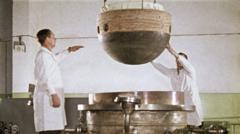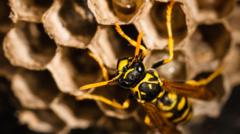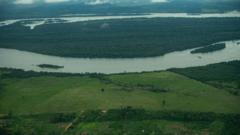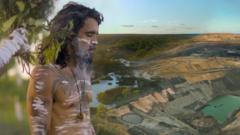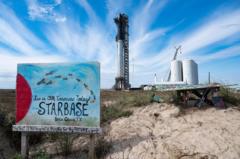In a significant moment linking past space exploration to present-day concerns, a fragment of the Soviet spacecraft Kosmos 482 is believed to have re-entered Earth's atmosphere after lingering in orbit since 1972. According to the European Space Agency (ESA), the lander portion of Kosmos 482, which was originally part of a mission aimed at exploring Venus, made its descent around 06:16 GMT (07:16 BST) on Saturday.
The precise details of the object's re-entry remain uncertain. It is still unknown if the fragment made impact on the ground or disintegrated during its passage through the atmosphere. With 70% of Earth's surface covered in water, experts from the ESA believe that the risk of the object causing significant damage appears low. Stijn Lemmens, a senior analyst at the ESA, highlighted that the likelihood of being struck by such space debris is significantly less than winning the lottery: “It's much more likely that you win the lottery than that you get impacted by this piece of space debris.”
The construction of Kosmos 482’s lander capsule favored durability to withstand the harsh conditions of Venus’s atmosphere, equipped with a robust heat shield. However, the viability of its parachute system, originally intended to facilitate a safe landing on Venus, may have been compromised due to its prolonged duration in space.
Lemmens pointed out that the re-entry of human-made objects is a frequent occurrence, with larger spacecraft making such descents on a weekly basis and smaller objects on a daily basis. Notable re-entries include China's Long March 5B booster, which fell over the Indian Ocean in 2022, and the Tiangong-1 space station, which mostly disintegrated over the Pacific Ocean in 2018.
International space agencies are currently keeping a close watch on the remnants of Kosmos 482. Looking ahead, Lemmens advocated for future spacecraft to have designs that facilitate controlled re-entries, thereby enhancing predictive measures for landing locations and minimizing risks to populated areas, ultimately mitigating the environmental impact of space debris. The advancements in debris management practices underscore the growing awareness and responsibility of nations and organizations engaged in space exploration.
The precise details of the object's re-entry remain uncertain. It is still unknown if the fragment made impact on the ground or disintegrated during its passage through the atmosphere. With 70% of Earth's surface covered in water, experts from the ESA believe that the risk of the object causing significant damage appears low. Stijn Lemmens, a senior analyst at the ESA, highlighted that the likelihood of being struck by such space debris is significantly less than winning the lottery: “It's much more likely that you win the lottery than that you get impacted by this piece of space debris.”
The construction of Kosmos 482’s lander capsule favored durability to withstand the harsh conditions of Venus’s atmosphere, equipped with a robust heat shield. However, the viability of its parachute system, originally intended to facilitate a safe landing on Venus, may have been compromised due to its prolonged duration in space.
Lemmens pointed out that the re-entry of human-made objects is a frequent occurrence, with larger spacecraft making such descents on a weekly basis and smaller objects on a daily basis. Notable re-entries include China's Long March 5B booster, which fell over the Indian Ocean in 2022, and the Tiangong-1 space station, which mostly disintegrated over the Pacific Ocean in 2018.
International space agencies are currently keeping a close watch on the remnants of Kosmos 482. Looking ahead, Lemmens advocated for future spacecraft to have designs that facilitate controlled re-entries, thereby enhancing predictive measures for landing locations and minimizing risks to populated areas, ultimately mitigating the environmental impact of space debris. The advancements in debris management practices underscore the growing awareness and responsibility of nations and organizations engaged in space exploration.

